During the development of rural settlements, the loss of distinctive rural characteristics, caused by the contradiction between urban expansion and the ideal of pastoralism, has attracted widespread attention from researchers worldwide. To effectively understand the development and trends of the Research of Features and Characteristics of Rural Settlements (abbreviated as RFCRS), this paper uses the knowledge mapping software CiteSpace to conduct co-citation analysis, research collaboration analysis, keyword clustering, and keyword co-occurrence. The study analyzes the basic concepts, literature distribution characteristics, research clusters, key issues, and development trends of RFCRS. The research found that the current key issues in RFCRS include "Ecological services and environmental protection of rural settlements," "Sustainable planning and architectural design issues of rural settlements," and "Human settlement environment and service facility construction of rural settlements." This paper predicts that future RFCRS research trends will focus on the study of landscape features and characteristics based on ecology, climate, and aesthetics; study of architectural features and characteristics based on characteristic factors and hierarchical structure; and research on rural revitalization based on sustainable development principles. This paper also offers four priority research suggestions for researchers from different disciplines.
1. Introduction
Settlements, as places for human habitation and life, encompass various forms of population concentration within specific geographic environments. The definition and understanding of rural settlements exhibit subtle variations across different academic disciplines and theoretical frameworks. For instance, when viewed from the perspectives of settlement geography [
1] and human settlement studies [
2,
3], settlements can be subdivided into rural settlements and urban settlements, with the two considered as parallel entities within this framework. However, within the context of urban and regional planning, rural settlements are more often regarded as a specific stage or component of the urbanization process, as elaborated upon in the detailed discussions by Pan and Gencer in their papers [
4,
5]. Rural settlements are fundamental social spaces formed by residents based on their production and living needs, serving as the basic units of traditional agrarian societies [
6]. They are significant social entities that reflect the relationship between people and the land, historical backgrounds, and socio-political relationships [
7,
8,
9]. Rural settlements are characterized by low population density, close-knit social structures, and reliance on local resources. The distinctive feature of the countryside comes from its antithetical position to the city, and its rurality is expressed as multiple social spaces overlapping in the same geographic area [
10]. Cloke defined rurality as “a condition of place-based homeliness shared by people with common ancestry or heritage and who inhabit traditional, culturally defined areas or places statutorily recognized to be rural [
11]”. Some researchers have also defined rurality in terms of three aspects of land use, the relevance between architecture and landscape, and lifestyle in rural settlements [
10,
12].
RFCRS originated in Western Europe in the 1840s. Early researchers such as Kohl, J. G., Meitzen, A., Lugeon, M., Blache, V., and Brunhes, J. were primarily concerned with the formation, evolution, and the relationship between rural settlements and the natural environment. Research methods during this period were predominantly descriptive [
13]. Starting from the 1920s, as research progressed, the features and characteristics of rural settlements gradually became a common subject of study across disciplines such as architecture, urban and rural planning, landscape architecture, and rural geography. In architecture, RFCRS primarily approached the topic from two dimensions: people’s perceptions of the spiritual and traditional cultural aspects of rural settlement places and the material representations required to form the features and characteristics of rural settlements. It included research on overall layouts, street and alley spaces, architectural complexes, and decorative elements [
14,
15].
In comparison, the urban and rural planning discipline pays more attention to the coupling between the morphological changes in villages and the spatial evolution of cities [
4]. It pays attention to the influence of environmental characteristics such as the natural environment, topography, climate, and economic conditions on rural settlements’ planning, design, and architectural features [
5]. In the discipline of landscape architecture, researchers generally believe that features and characteristics of rural settlements are a form of landscape that carries information about the ecology of rural habitat, history and culture, and construction and creation, and introduces the “gene (genes) [
16]”, “morphology”, and “architecture”. “Genetic concepts such as “genes” and “morphogenesis” [
17] are introduced, and “cultural landscape” [
18,
19] is proposed, “landscape genes” [
20] to explain the landscape pattern of rural settlements, ecological landscape, humanistic landscape, landscape aesthetics, and other topics. In rural geography, RFCRS started from the descriptive analysis and causal explanation between the static spatial pattern and natural geography at the village scale. Since the 1990s, it has gradually moved towards the spatial analysis and development prediction of rural settlements at the regional scale [
21,
22] and begun to pay attention to the role of human decision-making behaviors in changing the macroscopic layout and spatial structure of rural settlements [
23].
2. Research Progress on the Rural Settlements Development
3.1. The Literature Distribution Characteristics of RFCRS
3.1.1. The Trend of Annual Publications
The amount of knowledge, disciplinary characteristics, and leading countries in the research field can be reflected by the change in the volume of the literature, disciplines, and country distribution. Based on the online analysis function of WOS (Figure 2), it can be seen that the earliest RFCRS literature appeared in 1976, and the number of annual publications before 2010 was small (less than 50 publications per year), indicating that RFCRS was still in the exploratory stage at this time and had not yet been paid attention to; the number of publications during the period of 2010–2016 has shown a continuous and steady trend of growth, and the research has been gradually attracted attention. As of June 2023, the total number of pieces of RFCRS literature in the WOS core database is 1994. Among them, 225 documents were published in 2021, 245 documents were published in 2022, and 86 documents have already been published in 2023 (first 6 months).
Figure 2. Analysis of annual publications of RFCRS from 1976 to 2023 (first 6 months).
3.1.2. Source Disciplines of the Literature
In terms of discipline distribution, RFCRS is concentrated in the disciplines of Environmental Studies (21.31 per cent), Environmental Sciences (20.21 per cent), and Geography (11.84 per cent). In addition, Regional Urban Planning (8.68%), Urban Studies (8.02%), Ecology (7.87%), Architecture (4.56%), Civil Engineering (Engineering Civil (3.66%), and Economics (2.36%) are also covered. The above data indicate that RFCRS has gained wide attention from researchers and thus has multidisciplinary attributes (Figure 3).
Figure 3. Distribution analysis of disciplines in RFCRS (top 20).
3.1.3. Source Publications of the Literature
In terms of source publications, there are a total of 1064 publications, of which the journals with the most significant number of articles are Sustainability and Land, accounting for 4.26 per cent and 3.86 per cent, respectively, while the proportion of other publications is not very different (Figure 4), and the top 10 publications are mainly on the theme of land use, urban planning, and human settlements development.
Figure 4. Distribution of RFCRS source publications (top 20).
3.1.4. Source Countries of the Literature
An analysis of the research literature by country shows that China has the most significant number of publications in the field of RFCRS (Figure 5), with a total of 506 papers, followed by the United States, Italy, and the United Kingdom. Since 1976, RFCRS has been started in the UK, and the research results have steadily increased. In contrast, RFCRS in China started in 1999, which is a late start, but the number of RFCRS papers published has increased dramatically in recent years, which indicates that the future development potential of RFCRS in China is enormous.
Figure 5. Analysis of source countries of the RFCRS literature.
3.2. Analysis of Co-Citation Characteristics of RFCRS
3.2.1. Co-Citation Journals
As an analytical method for investigating the structure of any specific research field, journal co-citation analysis can unveil the core journals and disciplinary attributes of the research area [
32]. Citation rate means that two journals can be considered co-cited when at least one of their articles is cited by another citing article [
33], as shown in
Figure 6. Each node represents a journal, and the lines between the nodes represent links that reflect the strength of the co-citation relationship, with the node size being proportional to the number of citations a particular journal receives. The larger the node, the more times the journal is cited, and the red circle represents the node’s centrality, indicating that the journal has stronger links to other journals.
Figure 6. Co-citation analysis of journals in RFCRS. The colors in the graph represent the year in which the RFCRS journals were co-cited, with the more the color skewed toward red, the more recent the journals were co-cited.
3.2.2. Co-Citation Literature
Literature co-citation analyses can highlight the key literature at a particular research stage [
35]. The higher the number of co-citations an article receives, the more the article may be fundamental or innovative in research, reflecting the core of the research field. Numerous nodes in
Figure 7 represent the RFCRS research literature in the WOS core database. Among them, the node size is proportional to the importance and novelty of the literature, i.e., the larger the node, the more critical it is in RFCRS research; the node connecting lines represent the co-citation relationship between the RFCRS literature [
36], i.e., the more the connecting lines are, the stronger the degree of co-citation is.
Figure 7. Co-citation analysis of the literature in RFCRS. The colors in the graph represent the year of publication of the RFCRS literature; the more reddish the color, the more recent the literature was published. For all literature in
Figure 7, see references [
34,
37,
38,
39,
40,
41,
42,
43,
44,
45,
46,
47,
48,
49,
50,
51,
52,
53,
54,
55].
3.2.3. Co-Citation Authors
Each node in
Figure 8 represents an author, and the links between nodes represent the strength of co-citation. The citation frequency is proportional to the node’s size; the more significant the node and the more citations, the more critical the author’s research is. Red circles in the nodes indicate authors with high emergent citations, which means that the authors have a sudden increase in citation frequency within a certain period [
57]. Scholars set the minimum threshold for the visual analysis to 50 to highlight authors with more than 50 citations. Long, H. was cited 175 times, making him the most cited author and the most centrally cited author. Liu, Y. was the second most prolific author in the RFCRS, with a citation count 192. It is worth noting that several associations and organizations also have a very high co-citation frequency, such as the United Nations (47 citations), R Core Team (63 citations) and FAO (39 citations).
Figure 8. Co-citation analysis of authors in RFCRS. The colors in the figure correspond to the publication years when the works of RFCRS authors were collectively cited. A shift towards the red spectrum indicates a more recent timeframe in which the literature by these authors has been co-referenced.
3.3. Analysis of the Collaborative Characteristics in RFCRS
3.3.1. Collaborating Authors
Collaboration analysis is an effective method to investigate the level of collaboration between different authors in any scientific research field worldwide. Three levels of scientific research collaboration network analyses were conducted using CiteSpace at the micro (authors), meso (institutions), and macro (countries) levels to demonstrate the level of collaboration at different levels. Figure 9 illustrates the degree of collaboration between RFCRS authors at the individual level, where the size of the nodes represents the number of publications the authors have collaborated on, while the distance between the different nodes and the thickness of the links represent the strength of the collaboration.
Figure 9. Co-operation analysis of RFCRS authors. The color spectrum in the figure signifies the temporal dimension of author collaborations within RFCRS. A shift towards the red hue indicates more recent collaborative efforts among authors, implying a more recent timeframe of collaborative engagements.
3.3.2. Collaborating Institutions
Literature cooperation analysis can reflect the cooperation of different academic institutions in RFCRS. The node size in Figure 10 represents the number of articles published by the institution, and the connection between the node and the node represents the coordination and cooperation between different organizations. The more connections, the closer the organization cooperates with other organizations. It can be seen that the number of cooperations of RFCRS organizations is high, and the connections between the organizations are potent.
Figure 10. Collaborating analysis of institutions in RFCRS. The colors in the figure denote the collaborative years among RFCRS institutions, wherein a shift towards the red spectrum indicates more recent periods of institutional collaboration.
3.3.3. Collaborating Nations
Figure 11 represents the cooperation between countries, where the radius size corresponds to the number of published papers, with China publishing the most papers (498), followed by the United States (257). The purple circles in the figure represent centrality. The stronger the centrality, the stronger the influence of the stage, and the higher the citation rate of the published papers, which may be crucial knowledge-based literature. The centrality is a measure of the node’s importance in the network. There is a significant gap in the number of publications between different institutions. The United States is the strongest country in terms of centrality, with a centrality of 0.33 and the highest overall citation rate.
Figure 11. Collaborating analysis of countries in RFCRS. The colors in the figure represent the publication year of documents from collaborating countries in the RFCRS. The more the color of a node tends towards red, the later the collaboration in publishing documents occurred for that country.
3.4. Analysis of RFCRS Key Issues
3.4.1. Analysis of Keyword Clusters
Keyword cluster analysis can enhance the conciseness of the co-occurrence network of RFCRS keywords, condensing a substantial number of linked keywords into a relatively minor set of clustered research topics. It aids in identifying pivotal issues within a particular field of study [
58,
59]. In this process, CiteSpace employs the log-likelihood ratio algorithm to label each research topic cluster. The assessment of cluster mapping effectiveness primarily relies on two metrics: modularity value (Q) and average silhouette value (S). The modularity value (Q), ranging from 0 to 1, indicates significant structural coherence within a cluster module when Q exceeds 0.3, signifying a certain level of tight interrelation among the keywords within the cluster.
3.4.2. Summary of Key Issues
Classifying and merging RFCRS keyword clusters and analyzing the relevant literature shows that there are currently three main research topics within RFCRS. These topics include rural ecosystem services and environmental conservation, sustainable development and architectural design of rural settlements, and rural health services and population mobility.
- (1)
-
The Issue of Rural Ecosystem Services and Environmental Conservation in Rural Settlements. This topic is reflected in clusters 0, 7, 8, and 9. As rural development expands and socio-economic growth accelerates, the fundamental landscape of rural areas is undergoing significant changes. Due to delayed construction, ecological degradation, and inadequate management, rural settlements face challenges such as lacking local distinctiveness and environmental degradation during development [
61]. The question of protecting the rural ecological environment while promoting sustainable development through ecosystem services has garnered widespread attention within academia [
62]. Scholars have employed various methods such as assessment models [
63], public opinion [
64], and network analysis [
61] to analyze the key factors influencing the features and characteristics of rural settlements landscape. Rogge, E. and others have considered the gap between expert and public perceptions in rural settlement landscape planning, emphasizing the need to account for divergent landscape preferences among different target groups in future landscape planning [
64]. Xia, L. used the Analytic Network Process (ANP) method to explore the critical factors for sustainable rural landscape in the decision-making process of rural planning, highlighting settlement layout as the most significant factor and proposing strategies for sustainable rural landscape development [
61]. Azari Dehkordi, F. developed a Landscape Degradation Model (LDM) for rural areas in Japan, providing a quantitative framework for preserving characteristic rural landscapes [
63]. Future discussions within rural ecosystem services and environmental conservation will likely focus more on establishing models that balance the supply and demand of rural ecosystem services, determining the value of ecosystem services, and encouraging active farmer participation in ecosystem services. It will contribute to forming features and characteristics of the rural settlement landscape.
- (2)
-
The Issue of Sustainable Rural Settlement Planning and Architectural Design. This topic encompasses the core content of clusters 1, 2, 3, 4, and 10, involving a complex interplay of factors related to architecture, space, and the environment. In recent years, rural settlements have been facing challenges of population loss and environmental changes, making sustainable development an urgent concern. Sustainable development of rural settlements primarily focuses on exploring the relationship between rural architecture and the environment. Effective planning and architectural design play crucial roles in achieving the sustainable development of rural settlements, including spatial planning [
65], architectural aesthetics [
66], and landscape design [
67]. Kavas, K.R. and others introduced a novel approach in their comprehensive study of rural architecture by incorporating rural cultural landscapes into architectural design standards. They analyzed, interpreted, and evaluated traditional green rural residential areas [
68]. Kuczman, G. and colleagues utilized principles of landscape architecture to transform public spaces in rural settlements, considering aspects such as vegetation forms, natural elements, and socio-cultural factors in an integrated manner [
69]. Yıldırım, M. and others used the example of the traditional village of Sanıuva in Turkey to establish sustainable architectural heritage conservation standards and reuse methods by analyzing the relationship between traditional houses and local historical environmental changes [
70]. Future discussions within the domain of sustainable rural settlement planning and architectural design will explore innovative planning methods and architectural designs that promote the sustainable development of rural settlements. It will contribute to creating distinct features and characteristics of rural settlement architecture.
- (3)
-
The Issue of Construction of Living Environments and Service Facilities in Rural Settlements. This topic includes clusters 5 and 6. Human habitat and the development of service facilities are fundamental guarantees for achieving the sustainable development of features and characteristics of rural settlements. Aspects such as the quality of the human habitat, municipal infrastructure, medical service establishment, and challenges arising from population loss and ageing have significant implications for the formation and maintenance of features and characteristics of rural settlements. Currently, rural areas are confronted with population structure changes caused by population loss and ageing, giving rise to new demands for service facilities and foundational infrastructure in rural settlements.
3.5. Analysis of RFCRS Hotspots
3.5.1. Evolution Analysis of RFCRS Hotspots Based on Keyword Timezone
Keywords, serving as a means of refining and summarizing the primary content of an article authored by an individual, find joint employment within bibliometrics to conduct keyword frequency analyses. These analyses serve to unveil the distribution of research hotspots. A paper uses CiteSpace for keyword analysis of the RFCRS, resulting in a total of 700 nodes, with a selected frequency of 90 times more than the keywords of landscape, pattern, city, conservation, and other keywords for display; the keywords generated by the co-occurrence of the network is shown in Figure 13.
Figure 13. Analysis of keyword co-occurrence of RFCRS. The colors represent the timeline of keyword appearances, with shades of red indicating later appearances of keywords.
Each node in the graph represents a keyword, the keyword frequency is proportional to the size of the node, and the connecting line between the nodes represents the co-occurrence network of the keywords, and the number of times the keywords co-occur in multiple articles constitutes the weight of the co-occurrence network [
78]. According to the co-occurrence frequency, the main keywords are urbanization (122 times), land use (120 times), and landscape (114 times).
3.5.2. Identification of Research Hotspots Based on Keyword Burst
Keyword burst is a methodology used to analyze the frequency changes in keywords within a specific research domain over a defined time frame. This analysis captures shifts in research focus during that period, and keywords that exhibit bursts are considered to hold developmental potential and research value within that particular timeframe [
96]. CiteSpace’s keyword burst detection feature can identify keywords that undergo high-frequency changes within a specified time interval. In the study of “features and characteristics of Rural Settlements” from 1988 to 2023, 334 bursting keywords were identified. The top 30 keywords with the highest frequencies were selected for analysis.
The burst keyword map of RFCRS (Figure 15) demonstrates an in-depth exploration of rural qualities. From these keywords, it can observe that RFCRS has the following four research hotspots.
Figure 15. Analysis of burst keywords of RFCRS from 1994 to 2023 (first 6 months).
- (1)
-
Ecology and environmental protection
The terms “abundance”, “mortality”, “cover change”, and “vegetation” are all related to the ecological environment of the countryside. It indicates that the natural environment and ecosystem of the countryside is an essential direction of research and directly connects with the countryside’s spatial layout, land use and ecology. In addition, the appearance of “population” also reflects the exploration of the relationship between rural population change and the ecological environment.
- (2)
-
Interaction between urban and rural areas
With the acceleration of urbanization, keywords such as “rural development”, “urban sprawl”, and “deforestation” demonstrate the interaction and influence between rural and urban areas. It also shows that the features and characteristics of rural settlements need to be adapted to the natural environment and are also constrained by economic and social factors, especially the impact of urbanization.
- (3)
-
Cultural inheritance and heritage protection
The terms “cultural landscape”, “cultural heritage”, and “landscape change” show that RFCRS pays excellent attention to the cultural heritage and traditions of the countryside, with architectural styles, regional cultures, and religious practices. It is the focus of the study.
- (4)
-
Rural revitalization and transformation
The words “tourism”, “revitalize”, “transition”, and “rural revitalization” illustrate RFCRS’s emphasis on rural revitalization and transition development. Features and characteristics of rural settlements are closely related to the spatial forms, landscape patterns and architectural features of rural settlements, which promote a sustainable transformation of the rural economy and society while respecting traditional rural values.
3.6. Prediction of RFCRS Research Trends
3.6.1. Study on Features and Characteristics of Landscape Based on Ecology, Climate, and Aesthetics
The features and characteristics of rural settlements landscape result from nonlinear interactions among ecological environment, spatial patterns, and landscape aesthetics. With increasing global attention to ecological, environmental protection, climate change adaptation, and carbon neutrality issues, scholars have started researching the features and characteristics of rural settlements landscape from perspectives such as landscape genetics, ecological environment, climate adaptation, and landscape aesthetics. Landscape genetics refers to the inherent cultural factors that differentiate a landscape from others. It serves as a landscape’s “genetic” fundamental unit, acting as a dual expression and abstraction of the material carrier and cultural connotation of landscape features and characteristics [97]. Ecological environment and climate adaptation are the major driving factors influencing landscape features and characteristics. For instance, Turner, M.G. emphasized the central role of the ecological environment in shaping landscape aesthetics [98], and Galan, J. et al. pointed out that landscapes are complex and dynamic socio-ecological systems. Climate change can catalyze the holistic management of various dimensions (ecological, cultural, social, political, and economic) of landscapes and can address current adaptive planning issues [99].
3.6.2. Study of Architectural Features and Characteristics Based on Characteristic Factors and Hierarchical Structure
The features and characteristics of rural settlement architecture refer to the interrelationships between individual architectural entities within a settlement, influenced by natural topographical conditions and other factors. These relationships create a particular order and texture in space, ultimately giving rise to the overall characteristics of the settlement. This concept comprises both intrinsic meaning and external representations. The intrinsic meaning encompasses various features of rural settlements, including their economic, historical, cultural, and political contexts and their significance in different eras, artistic value, local distinctiveness, and ethnic customs [101]. The external representations are evident at a macro level through settlement texture, architectural layout, rural skyline and at a micro level through architectural styles, forms, materials, structures, colors, and more [102].
In terms of the study of intrinsic meaning, as discussed by Bourdier, J.-P., architecture is not merely a physical structure but closely intertwined with the local society and culture [103]. Regional culture and cultural landscapes find expression in architecture, while landscape and regional genes provide a unique foundation for these architectural features and characteristics [104]. Wei, Q. suggests that research on the theory and methods of “regional genes” can help researchers uncover the regulatory mechanisms behind the generation and growth of regional construction systems. This understanding can lead to the identification of settlement combinations, spatial forms, material choices, and construction methods that align with the principles of sustainable development [105]. Yao, Q. and others propose that the study of architectural memes has evolved from early identification and analysis of inheritable features of settlements and architecture to the reduction in, abstraction, and adaptive evolution of fundamental characteristic factors. Approaching the complex system of rural settlements from an architectural meme perspective helps decode their mechanisms of feature inheritance [106]. In rural settlement hierarchical characteristics research, elements such as village layouts, dwellings and public buildings, streets and alleys, public spaces, agricultural landscapes, and traditional farming and craftsmanship techniques all reflect the local rural culture [107]. Zhang, D. and others take the example of Henan province, combining spatial imagery and grammar to explore traditional rural settlements’ internal spatial order characteristics [108].
3.6.3. Research on Rural Revitalization Based on Sustainable Development Principles
The emergence of keywords such as “urban sprawl” (2012), “sustainable development” (2015), “floating population” (2017), “ecosystem services” (2017), and “rural revitalization” (2021) indicates a high level of attention to the issues of sustainable development and rural revitalization. These keywords represent essential research trends in the future of RFCR. In the face of global climate change and environmental degradation, sustainable development has become a shared pursuit of governments and the academic community worldwide. Based on sustainable development goals, revitalizing rural industries, improving living quality, and constructing the features and characteristics of rural settlements are crucial strategies for achieving effective cycles of rural development and alleviating social issues in rural areas.
In sustainable development research, Xia, L. et al. employ the Multiple-Criteria Decision-Making (MCDM) analysis method, using the Analytic Network Process (ANP) framework to explore the features and characteristics of sustainable rural settlements. They emphasize the importance of terrain-adapted settlement layouts, continuity of traditional architectural styles, restoration of natural landscapes, and rural vitality [61]. Górka, A. uses the case of rural development in Poland to underscore the close relationship between rural settlement landscapes and sustainable development, emphasizing the need for a clear rural vision to promote sustainable spatial development [25]. Regarding rural revitalization research, Turner, B.L. [110] and Liu, Y. et al. [111] indicate that rural revitalization should occur within sustainable development, ensuring a balance between ecological, economic, and social development in rural areas.
This entry is adapted from the peer-reviewed paper 10.3390/buildings13102457
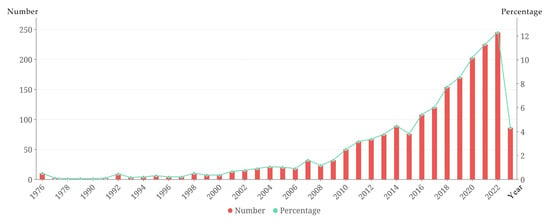
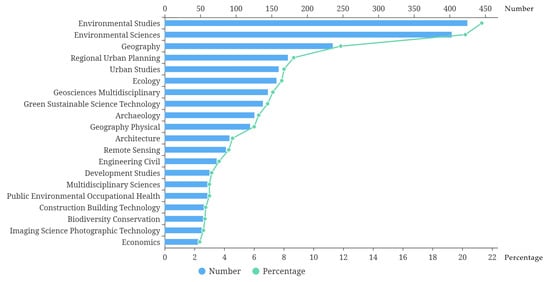

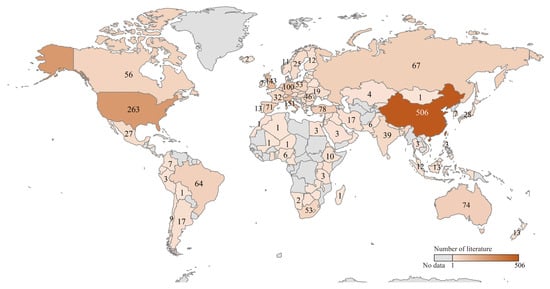
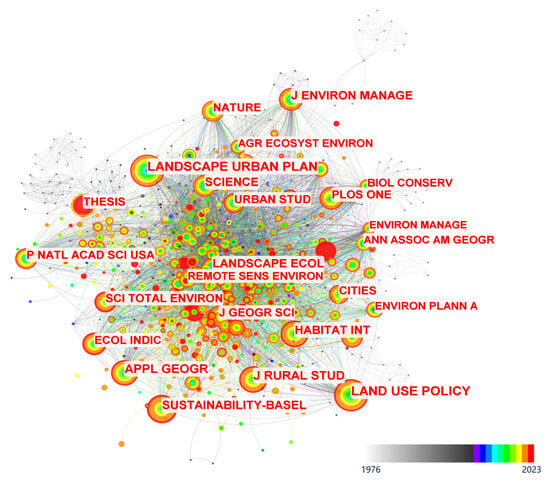
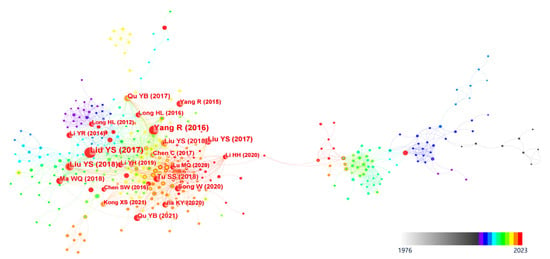
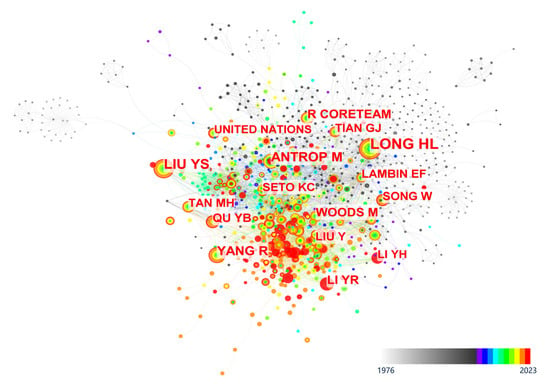
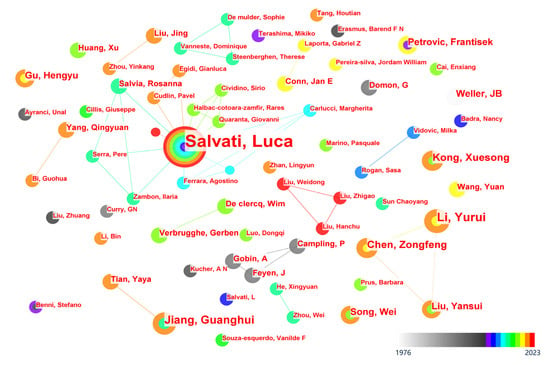
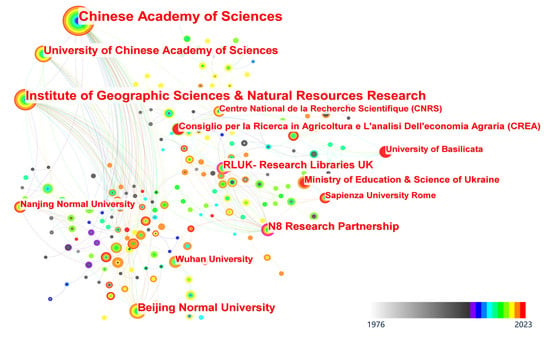
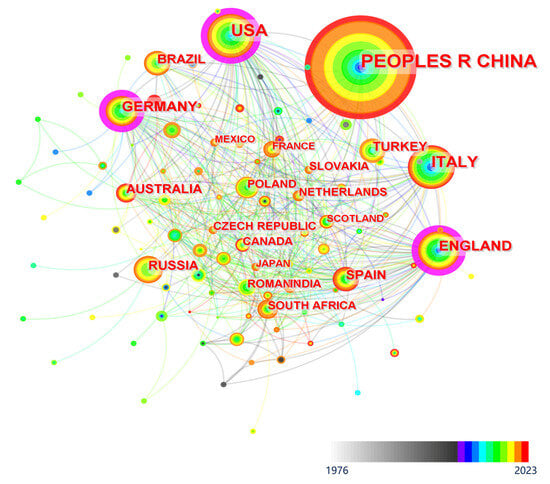
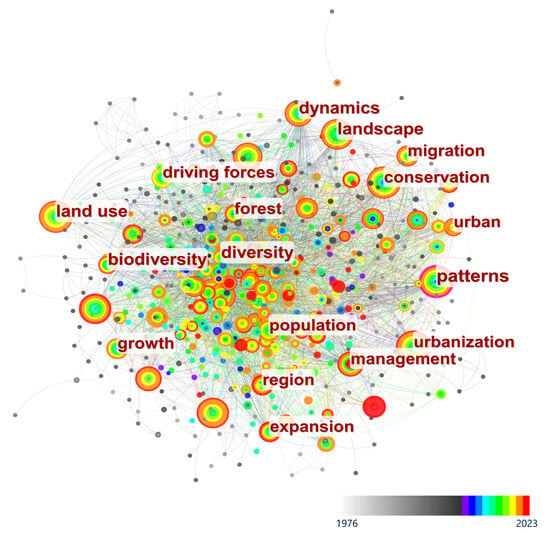
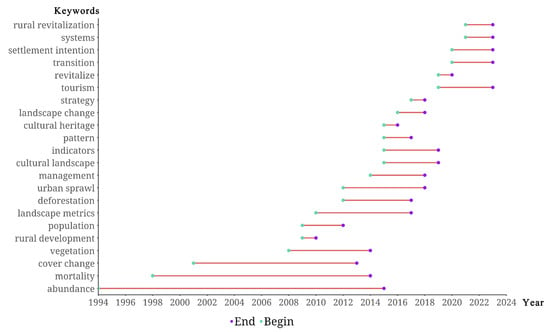
 Encyclopedia
Encyclopedia
